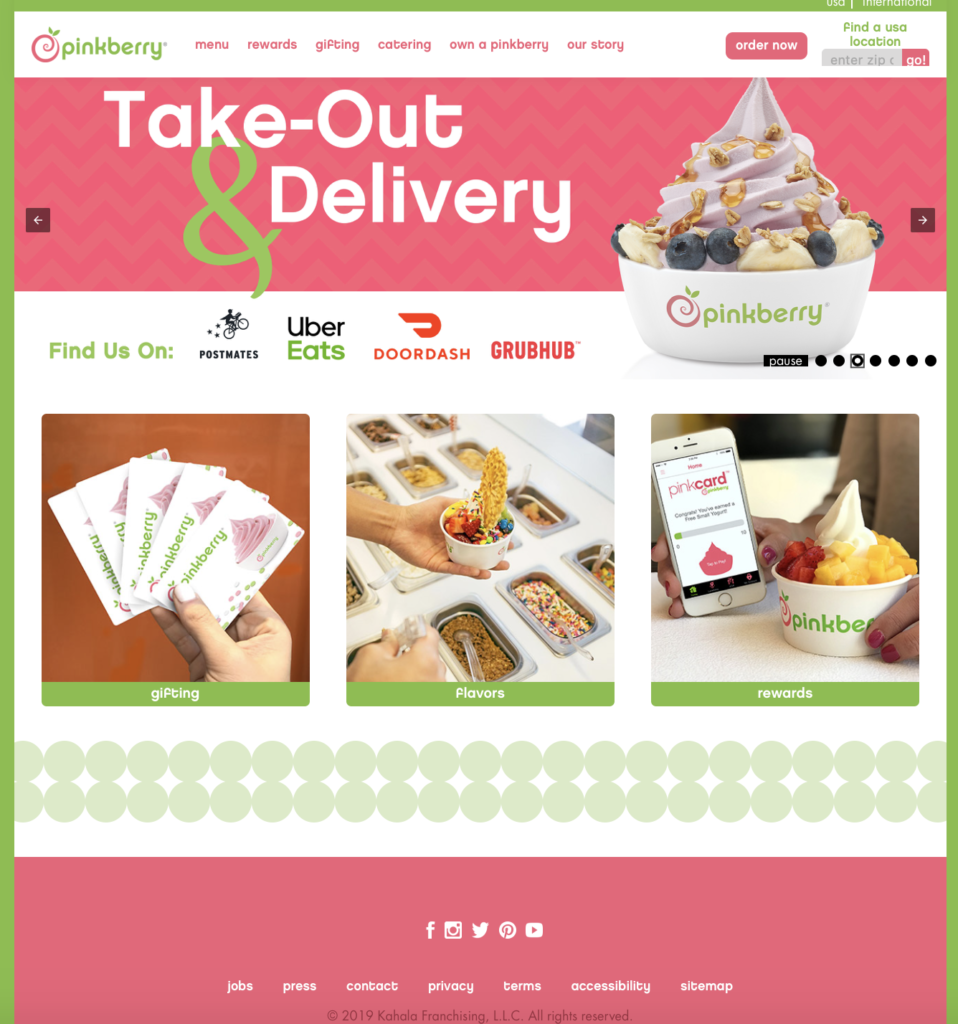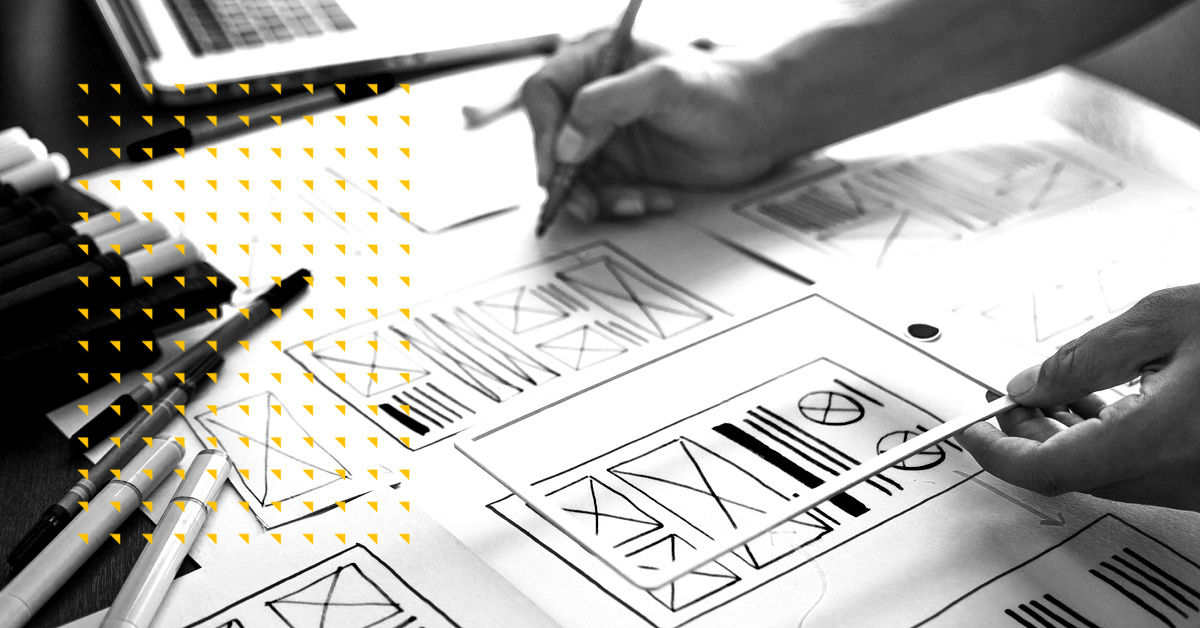Content is crucial to a brand’s success because it communicates what a brand is all about.
Design is equally as crucial to a brand’s success because it helps customers retain those very messages that took so much effort to thoughtfully craft.
The ways in which content and design teams collaborate can often vary from company to company; some organizations umbrella all content and design employees into one big creative team who collaborate on projects regularly, while other digital companies break them up and pair them together on a project-by-project basis.
When working in silos, both components individually contribute to the way consumers feel and think about a brand, but when performed synergistically, they deliver seamless experiences that support the same objectives, speak to the same audiences, and project consistent characteristics. The end result? Increased customer sentiment, satisfaction, and likeliness to return.
Whether you’re building a website from scratch, developing an omnichannel marketing strategy or executing a complete company rebrand, there are a couple things that must happen in order to set content and design teams up for collaborative success.
Start with research
When planning a strategy for a digital CX transformation, research is key. There are two areas of research that design and content teams should prioritize: their audiences and their competitors.
Audiences
Both teams need a common understanding of who their audiences or core customer groups are, but they can’t just know the who – when crafting CX, it’s crucial to understand the why. These are the basic demographic questions that brands typically answer to identify their “who”:
- What does your target audience look like?
- Where do they live?
- What do they do for a living?
- What is their annual income?
- What is their relationship status?
- What generation do they belong to?
- What are their hobbies?
- What problems do they have?
- What questions do they often ask themselves?
However, by answering psychographic questions – or the “why” – brands can craft more meaningful experiences curated for specific core consumer groups:
- What deeper motivations or beliefs drive their decision-making?
- What is causing them to seek out solutions now?
- How do they assign value to the things they deem important?
- Why do they value what they do?
- What are their interests? (This is different than their hobbies) What are their opinions on ___________? (Fill in the blank as it pertains to your product or services)
By answering psychographic questions – or the “why” – brands can craft more meaningful experiences curated for specific core consumer groups.
Competitors
When looking at competitors, teams should choose 3-5 of their top competitors and take a deep dive into their CX strategy. How do they speak to their audience? What do they highlight as their defining features? Which social platforms are they utilizing? What types of content (video, infographics, blog post, etc.) do they have? What are their colors? What is the look and feel of their photography and design? What is the voice and tone?
The most important component of competitive research may be looking at competitors as a collective to discover opportunities to stand above the crowd. Gaps in the market allow brands to be unique and develop key differentiators and characteristics in design and content strategies.
Write the story
Every brand has a story, but it has to be written down and widely shared (and repeated) for cross-company alignment to manifest.
When developing a brand story, it’s important for companies to define their objectives: What should potential customers understand? What are the key takeaways? What are the shared values that drive them forward? Creating a shared understanding of the story lends way to crafting a mission statement and list of core beliefs that employees and customers can rally around.
On top of that, decisions must be made about the brand’s verbal personality and attitude – namely, voice and tone. Brand voice reflects how language is used to convey purpose and intention. It’s defined by a brand’s style of communication and can vary based on persona and values and can range from intellectual or authoritative to fun, witty or anything in between. Conversely, tone can change depending on what channel is being used or who is being addressed – however, a framework of how and when different tones are used should be established for consistency.
A brand story should be simple, clear, and straightforward, so much so that any stakeholder – internally or externally – could sum it up in one sentence. Of course, that’s not always easy. In fact, it often takes months of writing, rewriting, debating, discussing and exploring a variety of approaches and perspectives before a brand’s message becomes clear. When that’s complete, though, design and content are armed with a singular ethos that can inform the implicit and explicit messages their creations deliver.
- An effective story should:
- Communicate what a brand does
- Make customers – both internally and externally – care
- Explain the problem the brand is trying to solve for
- Foster trust & loyalty with everyone it touches
Here are some brand statements from top companies that do just that:
- Apple is dedicated “to bringing the best user experience to its customers through its innovative hardware, software, and services.”
- Nike co-founder Bill Bowerman believes, “if you have a body, you are an athlete.” And Nike, “stresses to show each and every person how to reach the athlete within themselves.”
- Airbnb is creating “a world where anyone can belong anywhere.”
- Coca-Cola strives to, “craft the brands and choice of drinks that people love, to refresh them in body & spirit.”
- Southwest strives to, “connect people to what’s important in their lives through friendly, reliable, and low-cost air travel.”
Then visualize that story
It’s not just words that drive initial interest. emotional attachments or an overall experience with a brand. In fact, sometimes, design can play an even bigger role in that, especially when viewed through a lateral or psychological lens.
Voice and tone, as mentioned previously, set the stage. It gives a designer purpose to create, illustrate, and plan around. But taking that voice and tone to the next level with a visual archetype that aligns with things people have seen before, creates connection and relevancy, or elicits an emotional response can enable a brand to be understood without ever having to read anything.
A great example is Pinkberry. When defining the brand story, they chose a sweeter, more feminine look. Their visual design, whether on social media or in their yogurt shops, reflect a consistent aesthetic and mood. By using cursive typefaces, pastelle and airy colors, and curved illustrations, customers – old or new – immediately associate the brand with playful, approachable, youthful and delightful attributes.

Professional designers know the importance of considering psychology and neuroscience when matching visual designs to the written brand story. Some things they take into consideration are:
Color:
- Red: Communicates energy and urgency; Red is often used to communicate boldness, youthfulness and excitement
- Orange: Sometimes perceived as aggressive, orange creates a call-to-action; it can elicit feelings of confidence, cheerfulness or friendliness
- Yellow: An attention-grabber, yellow typically elicits feelings of optimism, clarity, and warmth
- Green: The easiest color for the eye to process, green is often used in fields related to science, government and HR. It can cultivate feelings of peace, growth and health.
- Blue: Often associated with feelings of trust and security, blue is seen as clean, calming, and professional, as well as dependent and strong.
- Purple: Regularly used in the beauty industry, purple is associated with being wise, creative and imaginative.
- Gray: The most practical and timeless of the colors, gray is used to communicate balance, neutrality, reliability and a level of calmness.
- Black: Often used by luxury brands, black is seen as powerful and sleek. It can contribute to feelings of credibility, power, professionalism, and precision.
Shape:
- Circular: Elicits feelings of community, friendship, love, partnership, unity, stability and innovation. Example of brands with a circular logo include Google Chrome, Starbucks, and Audi
- Angular: Elicits feelings of professionalism, stability, and efficiency, as well as power, strength, balance, and reliability. Examples of brands include Mitsubishi Motors, Microsoft, and AirTable
- Linear: Elicits feelings of exuberance, balance, sophistication, energy, and dynamic movement. Examples include AirBnB, Adidas, and Cisco
Whatever colors and shapes are used, the end result should visually represent the brand’s values, voice and tone.
Make the creative game plan
One question brands often ask is: Does the design framework come first? Or should content be strategized and written to drive design?
The answer: There is no answer. In fact, figuring that out is part of the creative process.
Some designers prefer to have content before they create a mockup. Some content creators prefer to know what space they need to fill before they begin writing. There is no right or wrong answer to your team’s plan as long as it is clearly defined, timelines are established, outlines are created and good project management is executed.
Teams who stick to the schedule and hold one another accountable benefit from more effective communication that helps bring the brand vision to life.
Professional designers know the importance of considering psychology and neuroscience when matching visual designs to the written brand story.
Evaluate your work & iterate regularly
As content and design work together, flexibility is key. A good CX strategy should be consistently evaluated, refined, evolved and transformed to meet ever-changing audience needs and compete with advancements in the industry.
Delegating tasks can help brands stay on top of potential and necessary updates: Direct content teams to share new trending keywords that can relate to a brand’s business or audiences and designers to report on new industry trends and evolving capabilities.
Ideally, all assets and content creation strategies should be evaluated at least once every six months.
The bottom line
Content and design can create powerful and consistent customer experiences when they work synergistically and are aligned on desired messaging. By bringing a number of creative brains with a variety of backgrounds and experiences to the table, you’ll be able to rethink what’s possible and create something that not only drives initial brand differentiation, but a process for continued improvement and growth that exceeds customers expectations and delivers exceptional value at every step of the journey.



